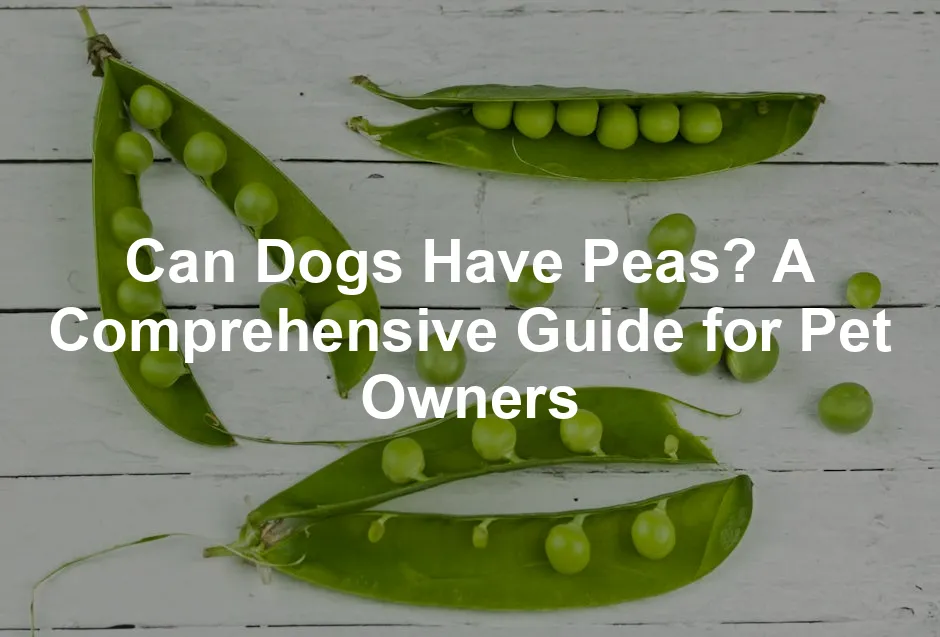Introduction
Are you curious about feeding peas to your furry friend? Many pet owners worry about human foods and their safety for dogs. In this post, we’ll focus on whether peas are safe for dogs, their benefits, and any potential risks. With this guide, you’ll be well-informed on how peas can fit into your dog’s diet.
Speaking of nutritious snacks, have you considered adding a dog treat with pea protein? They are not only delicious but also provide a healthy protein boost for your pup!
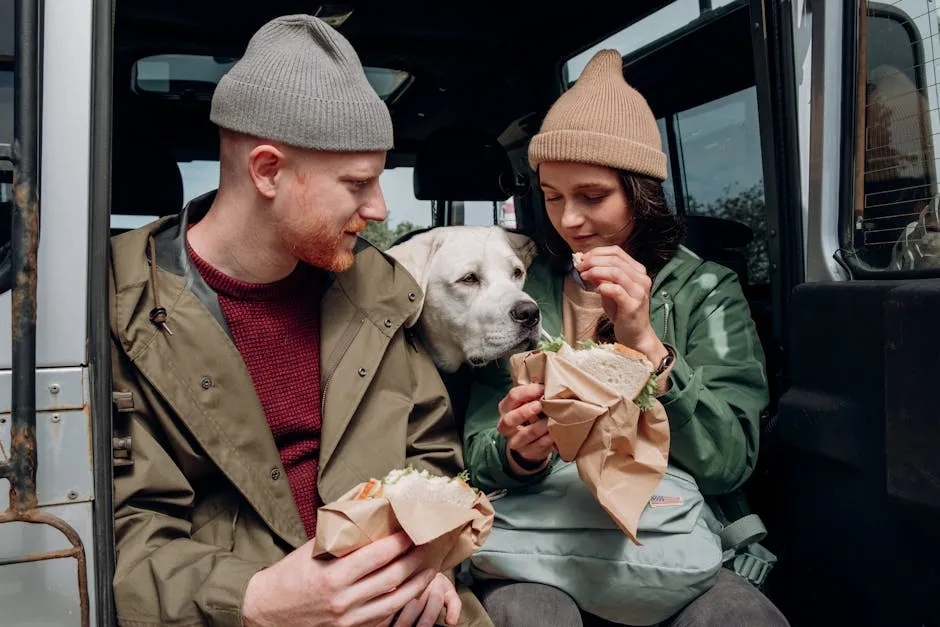
Summary and Overview
Peas are packed with nutrition for your dog. They provide vitamins A, K, C, and essential minerals like iron and potassium. There are several types of peas that are safe for dogs, such as green peas, snow peas, and sugar snap peas. However, moderation is key to prevent digestive issues. Ongoing research is exploring the potential links between legumes, including peas, and dog health, particularly concerning heart conditions like DCM. Always consult your vet before making any changes to your dog’s diet.
If you’re looking for a convenient way to store your dog’s food, consider a dog food storage container. It keeps the food fresh and free from pests, ensuring your pup gets the best every time!
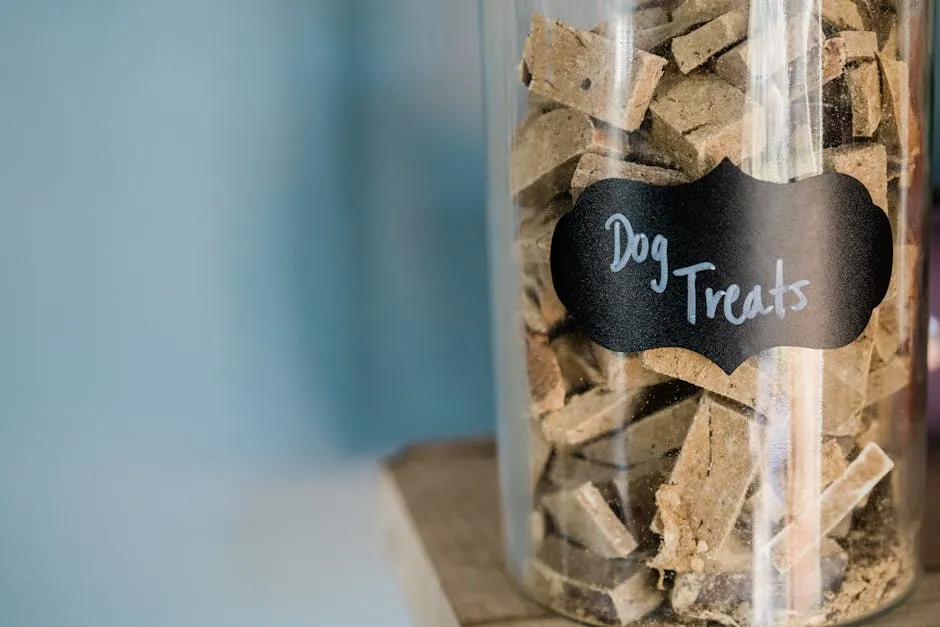
Can Dogs Eat Peas?
Overview of Peas in Dog Diets
Yes, dogs can safely eat peas! Most experts agree that they are a nutritious addition to their meals. Green peas, snow peas, and sugar snap peas are all safe options. When introducing peas, start with small amounts to gauge your dog’s reaction. Remember that moderation is crucial; too many peas can lead to gas or digestive upset. By incorporating peas carefully, you can provide your dog with a tasty, low-calorie snack while ensuring a balanced diet. Always remove any pods, as they may pose a choking hazard, especially for smaller breeds.
Speaking of low-calorie snacks, have you tried durable dog chew toys? They keep your pup entertained while promoting good dental health!
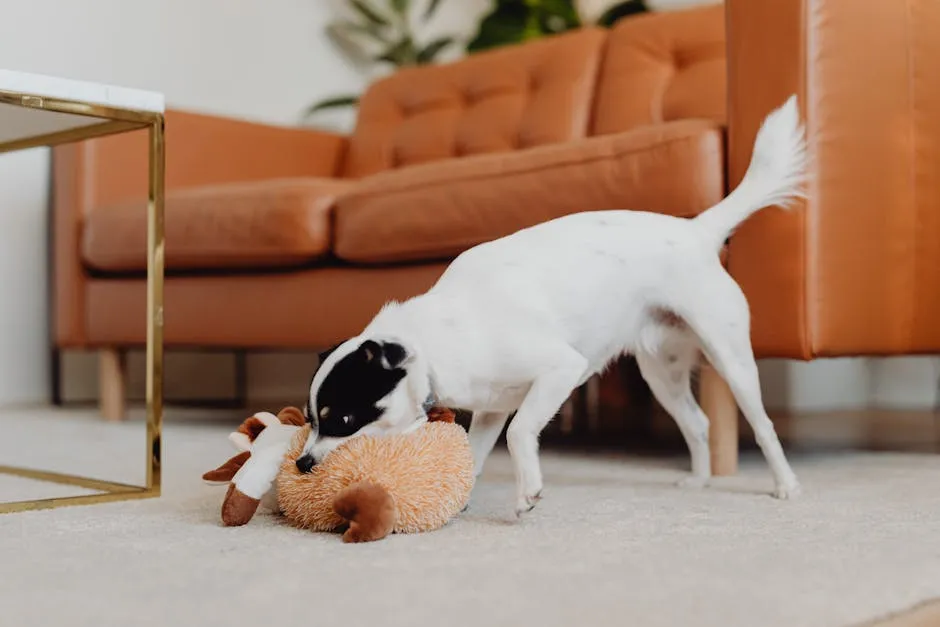
If you’re concerned about your dog’s digestive health, you might want to check out this article on dog diarrhea for more information.
Nutritional Benefits of Peas for Dogs
Vitamins and Minerals
Peas pack a punch when it comes to vitamins and minerals. They are rich in vitamin A, essential for healthy eyesight and skin. Vitamin K supports bone health and aids in blood clotting. Vitamin C boosts the immune system, helping your dog fight off illnesses. Additionally, B vitamins play a key role in energy production and brain function.
Minerals like iron are crucial for oxygen transport in the blood, while potassium helps maintain proper heart function and muscle contractions. Peas also contain antioxidants, which combat free radicals, reducing inflammation and promoting overall health. These nutrients collectively contribute to your dog’s vitality and well-being.
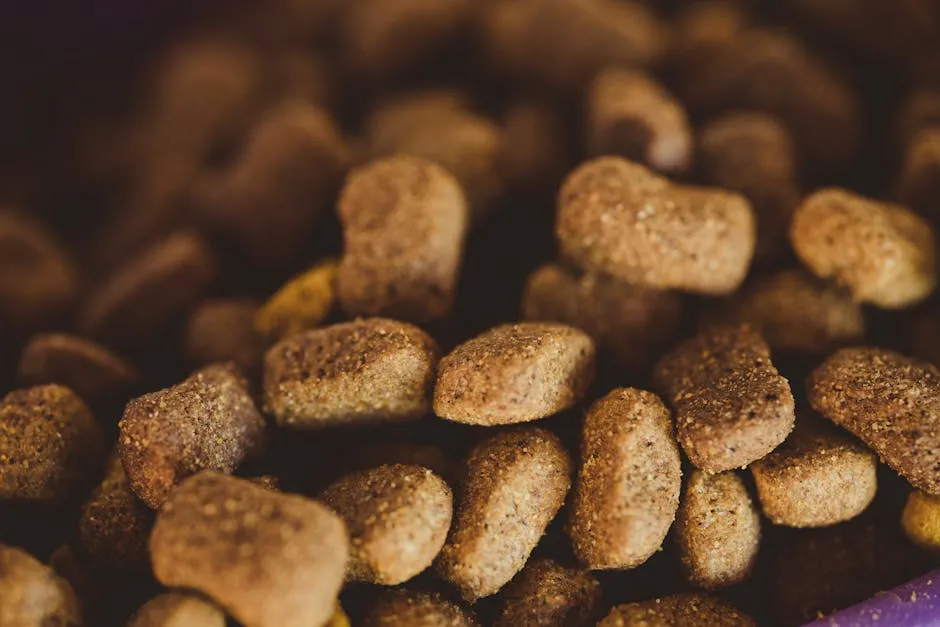
To ensure your dog gets all the nutrients they need, consider adding dog supplements to their diet. They can help fill any gaps and keep your pup feeling their best!
Fiber and Protein
Fiber is a vital component of your dog’s diet. It aids digestion by promoting regular bowel movements and preventing constipation. Additionally, fiber helps your dog feel full longer, which is great for weight management.
Peas also provide a decent amount of protein. While not a substitute for animal-based proteins, they can supplement your dog’s diet, supporting muscle growth and tissue repair. Moreover, peas are low in calories, making them an excellent choice for dogs that need to lose or maintain weight. Incorporating peas into meals can help keep your dog satisfied without the extra calories.
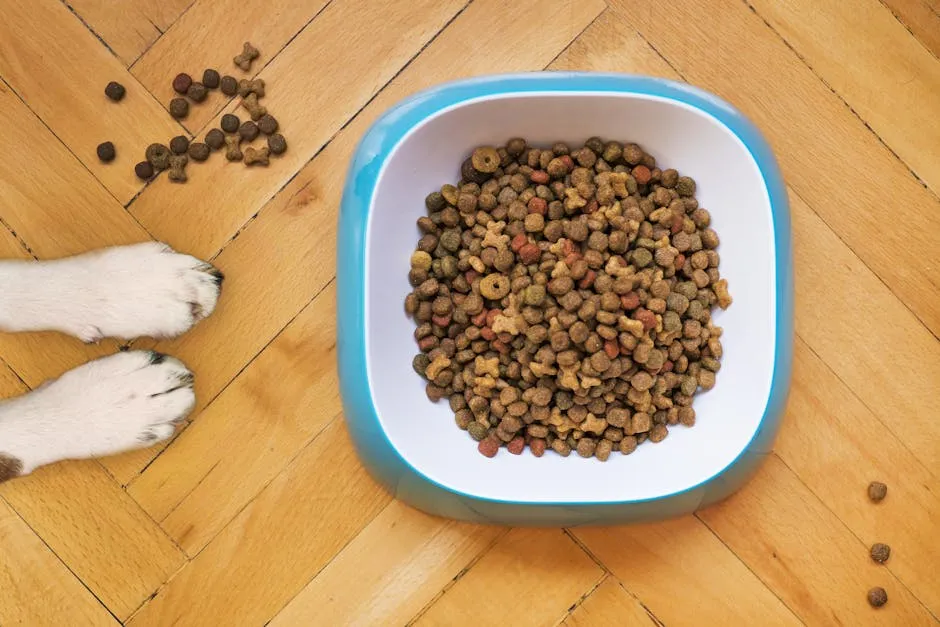
How to Feed Peas to Dogs
Types of Peas
When it comes to feeding peas to your dog, fresh, frozen, and canned varieties exist. Fresh peas are the best option, as they contain no additives. Frozen peas are also safe and retain most nutrients. Just ensure they’re cooked before serving to aid digestion.
Canned peas, however, should be avoided. They often include high levels of sodium, which can harm your dog. If you must use canned peas, choose those labeled as low-sodium and rinse them thoroughly. Always remember to remove any pods, as they can pose a choking hazard for smaller dogs.
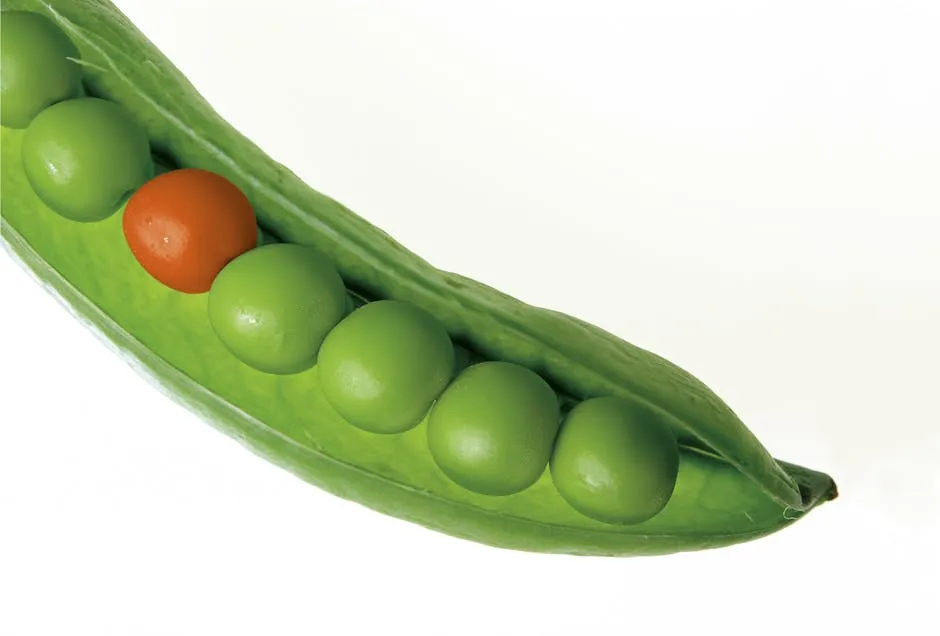
By selecting the right type of peas and preparing them correctly, you can provide a nutritious treat for your furry friend. And while you’re at it, how about a dog training clicker? It can make training sessions more fun and effective!
Preparation and Serving
Preparing peas for your dog is simple! First, if you’re using fresh or frozen peas, boil or steam them until soft. This makes them easier to digest and prevents choking. Avoid adding any salt or seasoning, as these can be harmful.
You can also mash the peas for smaller dogs or those who may have trouble chewing. This method can help them enjoy their snack without risk. Frozen peas can be served directly as a cool treat, especially on hot days.
When it comes to portion sizes, it’s essential to consider your dog’s size. For small dogs, one teaspoon of cooked peas is a good starting point. Medium dogs can have up to three teaspoons, while large dogs may enjoy one to two tablespoons. Always remember to introduce peas gradually to avoid any digestive upset.
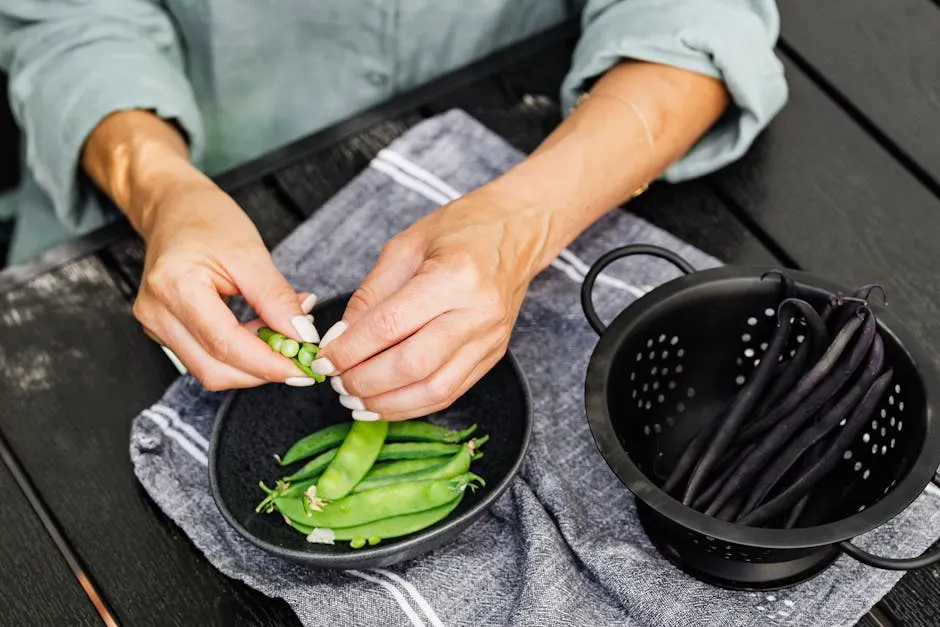
Risks and Considerations
Potential Health Risks
While peas are generally safe, there are some risks to keep in mind. Whole peas can be a choking hazard, especially for smaller dogs. Always ensure they are appropriately sized or mashed before serving.
Overconsumption can lead to digestive issues like gas or diarrhea. This is particularly important if your dog isn’t used to high-fiber foods. If your dog has kidney problems, consult your vet. Peas contain purines, which can convert to uric acid and may cause complications for dogs with certain health conditions.
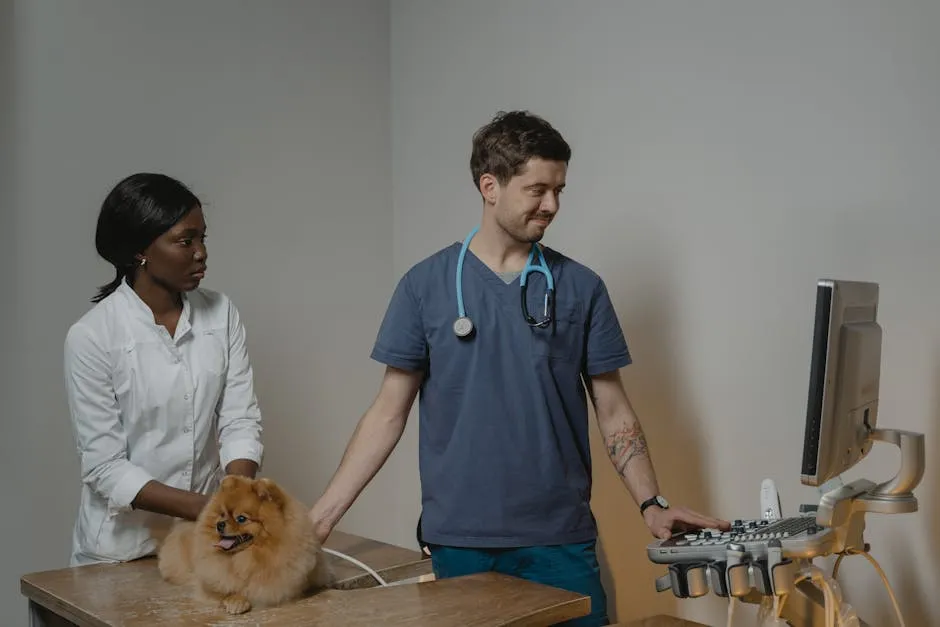
Allergies and Sensitivities
Some dogs may develop allergies or sensitivities to peas. Symptoms can include itching, swelling, or gastrointestinal upset. If you notice any unusual behavior after introducing peas, it’s crucial to monitor your dog closely.
Start with a small amount and observe how they react. If any adverse reactions occur, stop feeding peas immediately and consult your veterinarian. Keeping a close eye on your dog’s health when trying new foods is always a good idea.
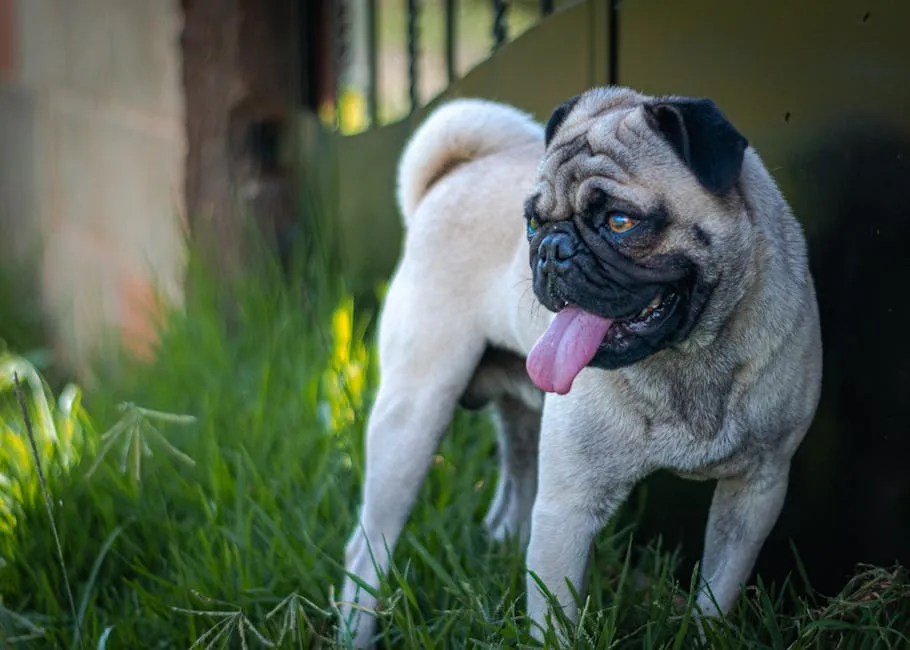
Expert Insights and Veterinary Recommendations
Consultation with Veterinarians
Before making any changes to your dog’s diet, consulting a veterinarian is crucial. Every dog has unique dietary needs based on factors like breed, age, and health. A vet can assess your dog’s specific requirements and help you determine if peas are a good addition. For instance, some breeds might be more prone to digestive issues, while others may have allergies. Your vet can guide you, ensuring you make safe and informed choices for your furry friend. Always prioritize professional advice when it comes to your dog’s nutrition.
If you want to be fully prepared for any pet emergencies, consider investing in a pet first aid kit. It can be a lifesaver in unexpected situations!
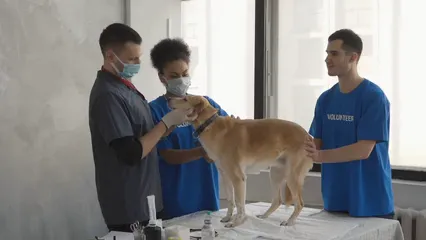
Case Studies and Research Findings
Recent studies highlight the connection between diet and canine health, particularly regarding legumes like peas. Some research indicates that diets high in legumes may be linked to Dilated Cardiomyopathy (DCM), a serious heart condition in dogs. While peas are generally safe in moderation, the FDA has reported cases of DCM in dogs consuming grain-free diets high in pulses. This ongoing research emphasizes the importance of a balanced diet. Monitoring your dog’s health and discussing any dietary concerns with your vet is essential for their well-being.

For more information on how to recognize and treat allergies in dogs, consider reading this article on common skin allergies in dogs.
Conclusion
In summary, peas can be a safe and nutritious treat for dogs when offered in moderation. They provide vitamins, minerals, and fiber that can enhance your dog’s diet. However, always consult your veterinarian before introducing new foods. Responsible feeding practices and attention to your dog’s individual needs are key to maintaining their health. Stay informed and prioritize veterinary advice for any dietary concerns.
And if you’re looking to pamper your pup further, how about a cozy orthopedic dog bed? It’s perfect for those long naps and can help support your dog’s joints!

FAQs
1. Can dogs eat raw peas?
Yes, dogs can eat raw peas, but moderation is key. Raw peas are not toxic, and many dogs enjoy their crunchy texture. However, some dogs may find them hard to digest. It’s wise to monitor your dog’s reaction when introducing raw peas. If you notice any digestive upset, consider cooking them to aid digestion. Always ensure the peas are fresh and free from pesticides before offering them to your pup.
2. Are frozen peas safe for dogs?
Absolutely! Frozen peas are a safe and nutritious treat for dogs. They retain most of their nutrients, making them a healthy snack. Just ensure they are thawed or lightly cooked before serving. Frozen peas can also be a refreshing option on hot days. Dogs often enjoy the cool texture. As always, serve them in moderation to avoid digestive issues.

3. Can dogs have canned peas?
Canned peas are generally not recommended for dogs. They often contain high levels of sodium, which can lead to health issues, including dehydration. While a small amount may not cause harm, it’s best to avoid them altogether. If you must use canned peas, look for low-sodium options and rinse them thoroughly. Fresh or frozen peas are always the safer choice.
4. How many peas can I give my dog?
The amount of peas you can give your dog depends on their size. For small dogs, a teaspoon of cooked peas is a good start. Medium-sized dogs can handle up to three teaspoons, while large dogs may enjoy one to two tablespoons. Treats, including peas, should make up no more than 10% of your dog’s daily calorie intake. Always introduce new foods gradually to avoid digestive issues.
5. Can puppies eat peas?
Yes, puppies can eat peas! They offer essential nutrients beneficial for growth. When introducing peas, ensure they are cooked to aid digestion. Avoid raw peas, as puppies may struggle to chew them. Always start with a small portion and observe their reaction. If they enjoy them without issues, you can gradually increase the amount over time while monitoring for any adverse effects.
6. What should I do if my dog has a reaction to peas?
If your dog shows any signs of a reaction to peas, such as itching, swelling, or gastrointestinal upset, stop feeding them immediately. Monitor your dog closely for any worsening symptoms. If symptoms persist or are severe, contact your veterinarian for advice. It’s always better to err on the side of caution when it comes to your dog’s health.
7. Are peas linked to any health conditions in dogs?
Current research is exploring potential links between pea consumption and health conditions in dogs, particularly Dilated Cardiomyopathy (DCM). While peas are safe in moderation, some studies suggest that diets high in legumes may contribute to heart issues in certain breeds. If your dog has a history of heart problems, consult your veterinarian before making any dietary changes that include peas.
Please let us know what you think about our content by leaving a comment down below!
Thank you for reading till here 🙂
All images from Pexels

